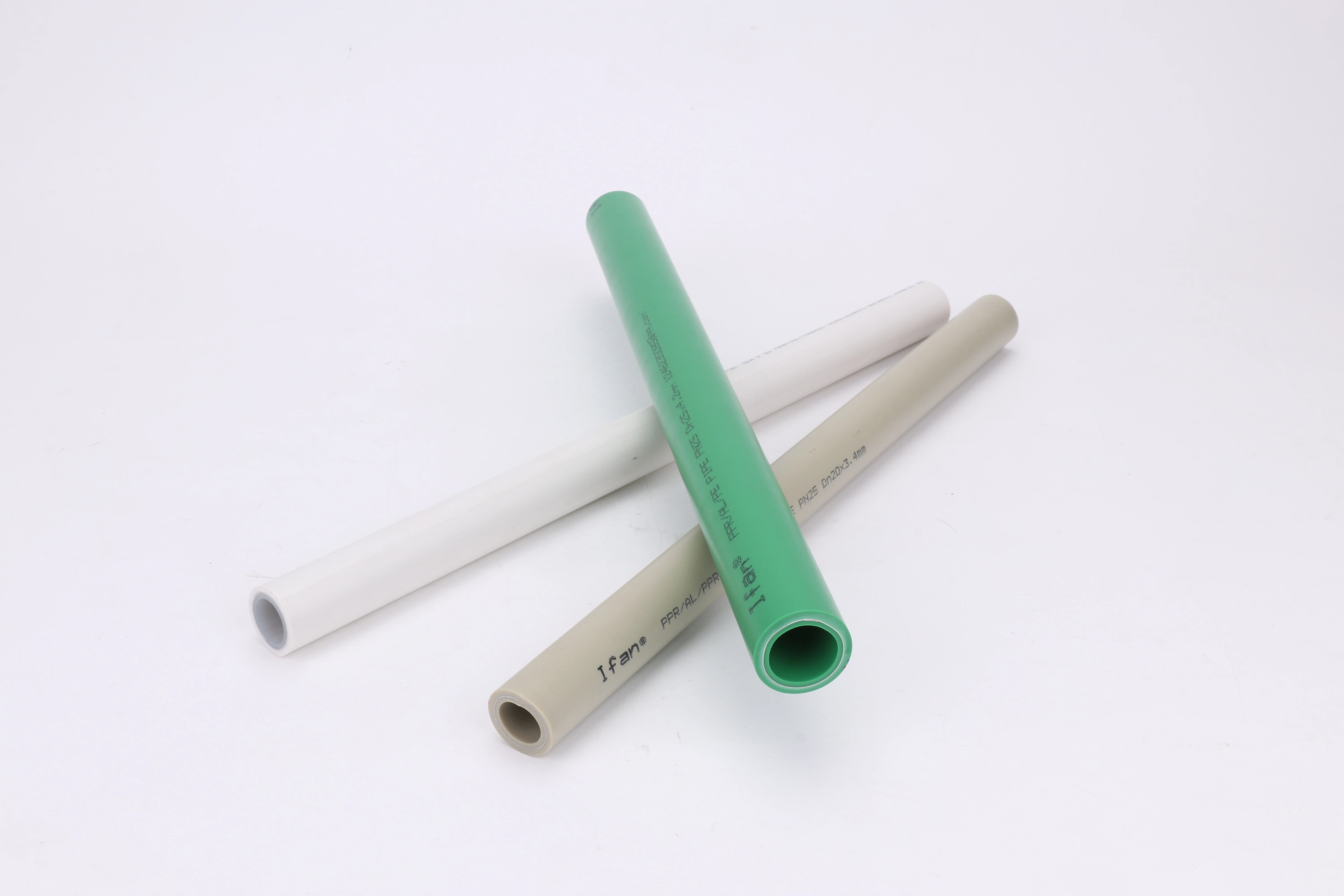When choosing piping materials for plumbing, drainage, or heating systems, one of the most common questions is:
What is the difference between PVC and PPR pipes?
PVC (Polyvinyl Chloride) and PPR (Polypropylene Random Copolymer) are two widely used plastic piping solutions, each with unique characteristics suited to specific applications. In this guide, we’ll help you understand the key differences, advantages, and use cases so you can choose the right material for your project.
🔵 Understanding PVC Pipes
✅ Characteristics of PVC
PVC is a rigid plastic material known for:
- High chemical resistance
- Lightweight design
- Easy installation (joined with solvent cement)
- Smooth inner surface to reduce flow resistance
- UV-resistant variants for outdoor use
Pressure Ratings: Typically available in SCH40, SCH80, or PN-rated pressure classes.
Temperature Resistance: Recommended for cold water use only—maximum working temperature around 60°C (140°F).
🏗️ Common Applications of PVC
- Cold water plumbing
- Drainage and waste systems
- Electrical conduit
- Irrigation systems
- Ventilation ducts
🟢 Understanding PPR Pipes
✅ Characteristics of PPR
PPR is a thermoplastic material known for:
- Excellent temperature and pressure resistance
- Heat fusion joining (leak-proof welding)
- Non-corrosive, chemical resistant
- Long service life (50+ years)
- Recyclable and heavy-metal free
Pressure Ratings: PN16, PN20, PN25
Temperature Resistance: Up to 95°C (203°F) for continuous hot water use
🏗️ Common Applications of PPR
- Hot and cold water supply
- Underfloor heating systems
- Industrial and chemical piping
- Hospital and food-grade systems
- Green building projects

⚖️ Comparative Analysis: PVC vs PPR
🔥 Thermal Conductivity: PVC vs PPR
| Недвижимость | PVC | PPR |
|---|---|---|
| Max Temp | ~60°C | ~95°C |
| Hot Water Use | ❌ Not recommended | ✅ Ideal |
| Thermal Expansion | Lower | Higher (requires expansion compensation) |
Verdict: PPR is superior for hot water and heating applications.
🌱 Environmental Impact: Sustainability Considerations
- PVC: Contains chlorine and may release harmful chemicals during manufacturing or disposal.
- PPR: Non-toxic, lead-free, BPA-free, and 100% recyclable, making it better for sustainable building.
Verdict: PPR is the greener choice.
💰 Cost Comparison: Which Is More Economical?
- PVC: Lower upfront cost; ideal for low-pressure, cold water systems.
- PPR: Slightly higher material and installation cost due to fusion welding, but better long-term value and durability.
Verdict: Choose based on performance needs, not just price.
🛠️ Choosing the Right Material for Your Project
🔍 Factors to Consider
- Temperature Requirements – Use PPR for hot water; PVC for cold.
- Pressure Load – PPR can withstand higher pressure.
- Lifespan & Maintenance – PPR has longer service life.
- Installation Environment – Consider UV exposure, chemicals, or buried vs exposed piping.
📌 Recommendations for Different Applications
| Application | Recommended Material |
|---|---|
| Drinking water (hot & cold) | ✅ PPR |
| Drainage & waste water | ✅ PVC |
| Industrial chemicals | ✅ PPR (for resistance) |
| Agricultural irrigation | ✅ PVC (cost-effective) |
| Underfloor heating | ✅ PPR |
✅ Conclusion
Both PVC and PPR pipes offer value in the right applications, but understanding their unique properties is essential for making informed project decisions.
If your project involves high temperature, pressure, or long-term durability, PPR is clearly the superior choice—especially in heating systems, drinking water networks, and green construction projects.
At ifanpro, we manufacture and export high-quality PPR pipe systems for global distributors, contractors, and infrastructure developers. We also provide custom OEM solutions to meet your branding and specification needs.
Explore our certified, export-ready products today to build stronger, safer, and more sustainable piping systems.













Последние комментарии